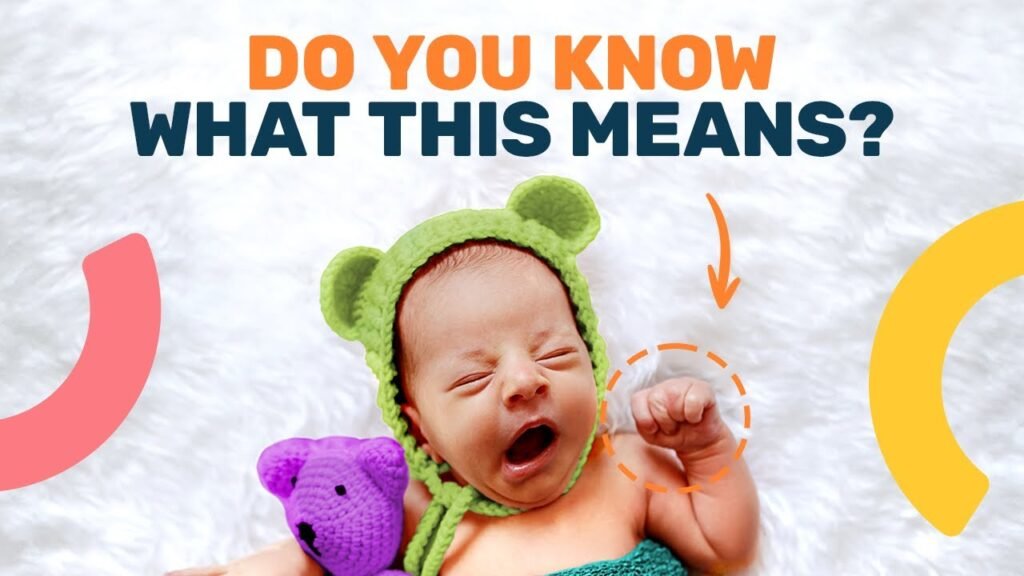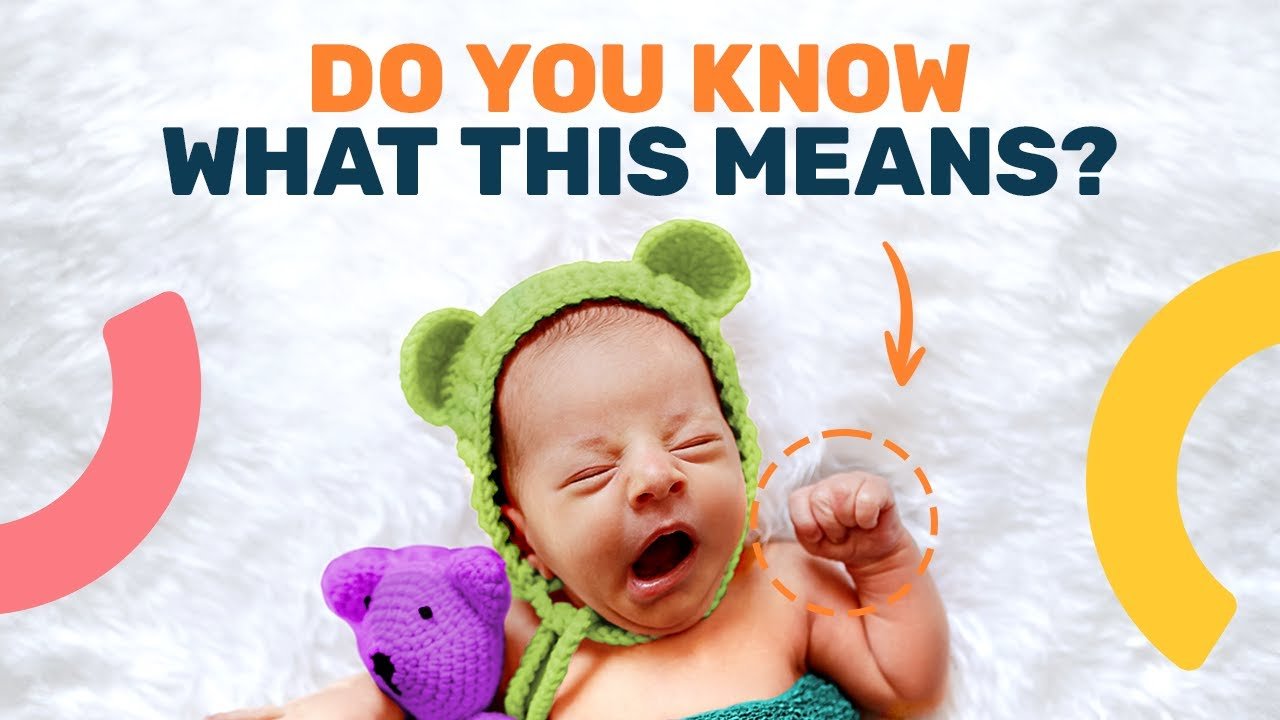You’ll find that newborn cues are often reflexes, rather than clear signs of hunger or other needs. Common reflexes like the Gape Reflex and Palmar Grasp Reflex can sometimes be misinterpreted by parents. By understanding these reflexes and behaviors, you can accurately interpret your baby’s needs and avoid confusion in the process.
When watching videos or observing your baby, keep in mind that reactions like a quivering lip or clenched fists may not always mean they are cold or hungry. By looking for a combination of behaviors and understanding the reflexes that newborns exhibit, you can better determine if your baby is hungry, tired, or cold. Seek guidance from medical professionals if you have concerns about your baby’s health to ensure their well-being.
Understanding Newborn Reflexes
As a new parent, it is important to understand the difference between reflexes and behaviors in newborns. Reflexes are involuntary responses to specific stimuli, while behaviors are intentional actions or expressions. Newborn reflexes are instinctual and serve important purposes in the early stages of development.
Difference between reflexes and behaviors
Reflexes are automatic responses that newborns are born with, such as sucking, swallowing, and grasping. These reflexes help babies survive and adapt to their new environment. Behaviors, on the other hand, involve deliberate actions that babies learn over time, such as smiling, cooing, and reaching for objects. Understanding the distinction between reflexes and behaviors can help parents interpret their baby’s needs more accurately.
Common reflexes in newborns
Some common reflexes seen in newborns include the Gape Reflex and Palmar Grasp Reflex. These reflexes are important for feeding, bonding, and overall development. It is essential for parents to recognize these reflexes and understand their significance in caring for their newborn.
How reflexes develop in newborns
Reflexes in newborns develop as a result of the nervous system maturing and responding to various stimuli. These reflexes are essential for survival and early development. Over time, as babies grow and develop, these reflexes may fade or become integrated into voluntary movements and behaviors.
Gape Reflex
The Gape Reflex is a common reflex seen in newborns where the baby opens their mouth wide in response to a stimulus.
Definition and characteristics
The Gape Reflex is an automatic response that causes newborns to open their mouths wide when triggered. This reflex is vital for feeding and latching onto a bottle or breast. It is a subconscious behavior that helps babies initiate the feeding process.
Purpose of the gape reflex
The Gape Reflex serves the purpose of allowing newborns to latch onto a nipple or bottle to begin feeding. It helps babies take in milk or formula and ensures proper nutrition and growth. While the reflex itself does not indicate hunger, it plays a significant role in the feeding process.
How to differentiate gape reflex from signs of hunger
It is important for parents to differentiate the Gape Reflex from signs of hunger. While the reflex may be triggered by touching the baby’s lip or cheek, it does not always mean the baby is hungry. Looking for a combination of hunger cues, such as rooting, sucking motions, and fussiness, can help determine if the baby is ready to feed.
Palmar Grasp Reflex
The Palmar Grasp Reflex is another common reflex seen in newborns where the baby’s fingers curl tightly around an object when touched on the palm of the hand.
Characteristics of palmar grasp reflex
The Palmar Grasp Reflex is characterized by the baby’s natural response to close their fingers around an object when pressure is applied to the palm of their hand. This reflex helps strengthen hand muscles and prepare babies for fine motor skills development.
Importance of palmar grasp reflex
The Palmar Grasp Reflex is essential for the development of hand-eye coordination and fine motor skills in newborns. It helps babies explore their environment and interact with objects as they grow. While this reflex is not indicative of hunger, it plays a crucial role in early development.
Not necessarily an indicator of hunger
Unlike some reflexes that may signal hunger or discomfort, the Palmar Grasp Reflex is not necessarily an indicator of hunger. It is a natural response that aids in the development of hand muscles and coordination. Parents should look for other hunger cues to determine if the baby is ready to feed.

Interpreting Newborn Behaviors
Understanding newborn behaviors is key to meeting your baby’s needs and fostering a strong parent-child bond.
Common behaviors in newborns
Newborns exhibit a range of behaviors, from crying and cooing to sleeping and feeding. These behaviors serve as communication tools for babies to express their needs and feelings. By observing and interpreting these behaviors, parents can better understand and respond to their baby’s needs.
Signs of hunger in newborns
Signs of hunger in newborns include rooting, sucking motions, fussiness, and increased activity. Babies may also display early, mid, and late hunger cues, such as stirring, stretching, and crying. Recognizing these hunger cues can help parents feed their baby in a timely manner.
Other cues to look out for
In addition to hunger cues, newborns may display other cues to indicate their needs. These cues can include body language, facial expressions, and sounds. By paying close attention to these cues, parents can effectively respond to their baby’s needs and provide comfort and support.
Quivering Lip and Clenched Fists
Quivering lip and clenched fists are common reflexes and behaviors seen in newborns that may not always indicate hunger.
Possible meanings of quivering lip
A quivering lip in newborns is often a reflexive response to stimuli such as noise or movement. It is a natural reaction as part of the baby’s developing nervous system. While a quivering lip may resemble a sign of coldness in adults, in newborns, it is a normal response to their environment and should not be a cause for concern.
Understanding clenched fists
Clenched fists in newborns are a result of the Palmar Grasp Reflex, where babies instinctively curl their fingers around objects when pressure is applied to their palms. This reflex helps strengthen hand muscles and prepare babies for future grasping and holding activities. While clenched fists may be mistaken for hunger cues, they are a normal part of early development.
When to be concerned
While quivering lip and clenched fists are common reflexes in newborns, there are times when these behaviors may indicate a potential issue. If your baby consistently displays these behaviors along with other concerning symptoms, such as persistent crying, poor feeding, or unusual movements, it is important to seek medical advice to rule out any underlying health issues.
How to Decipher Baby’s Cues
Deciphering your baby’s cues involves recognizing and interpreting a combination of reflexes and behaviors to meet their needs effectively.
Combining reflexes and behaviors
By combining knowledge of reflexes and behaviors, parents can gain a deeper understanding of their baby’s cues and needs. Recognizing reflexive responses and intentional behaviors can help caregivers provide appropriate care and support.
Observing multiple cues
Observing multiple cues, such as hunger signs, body language, and vocalizations, can help parents accurately interpret their baby’s needs. By paying attention to a range of behaviors, caregivers can respond promptly and effectively to their baby’s changing requirements.
Tips for interpreting baby’s needs
Some tips for interpreting your baby’s needs include maintaining close physical contact, responding promptly to hunger cues, and creating a consistent routine. By establishing a strong bond with your baby and paying attention to their cues, you can better meet their needs and promote healthy development.
Importance of Understanding Newborn Reflexes
Understanding newborn reflexes is crucial for promoting your baby’s well-being, enhancing parent-child bonding, and detecting potential health issues early.
Effect on baby’s well-being
Understanding newborn reflexes can positively impact your baby’s overall well-being by ensuring their needs are met promptly and appropriately. By recognizing and responding to reflexes and behaviors, parents can create a safe and nurturing environment for their baby to thrive.
Enhancing parent-child bonding
Interpreting your baby’s cues and responding to their needs can strengthen the bond between parents and children. By establishing trust and meeting your baby’s needs effectively, you can build a strong foundation for a loving and secure relationship that promotes healthy development.
Role in early detection of health issues
Recognizing abnormal reflexes or behaviors in newborns can help parents identify potential health issues early on. By seeking medical advice when concerns arise and staying informed about your baby’s development, you can address any problems promptly and ensure your baby receives the necessary care and support.
When to Seek Medical Advice
Knowing when to seek medical advice for your baby is essential for ensuring their health and well-being.
Signs to watch out for
Signs to watch out for in newborns include persistent crying, feeding difficulties, unusual body movements, and changes in behavior. If you notice any concerning symptoms or behaviors that are out of the ordinary for your baby, it is important to seek medical advice promptly.
When to consult a healthcare provider
It is recommended to consult a healthcare provider if you have any doubts or concerns about your baby’s health or development. Healthcare professionals can provide guidance, reassurance, and medical assistance to address any issues and ensure your baby’s well-being.
Importance of early intervention
Early intervention is crucial in identifying and addressing any potential health issues in newborns. By seeking medical advice early on, parents can prevent complications, receive appropriate treatment, and promote the best possible outcomes for their baby’s health and development.
Resources for Help and Support
There are various resources available for parents to seek help and support in caring for their newborns.
Local healthcare providers
Local healthcare providers, such as pediatricians, lactation consultants, and child development specialists, can offer guidance and support in meeting your baby’s needs. By building a relationship with trusted healthcare professionals, parents can access expert advice and assistance when needed.
Online resources for parents
Online resources, such as parenting websites, forums, and educational materials, can provide valuable information and support for parents of newborns. These resources offer tips, advice, and community support to help parents navigate the challenges of caring for a new baby.
Support groups for new parents
Support groups for new parents, both online and in-person, can provide a sense of community, shared experiences, and emotional support. Connecting with other parents who are going through similar experiences can offer reassurance, camaraderie, and practical tips for caring for newborns.
Conclusion
In conclusion, understanding newborn reflexes and behaviors is essential for interpreting your baby’s cues accurately and meeting their needs effectively. By recognizing common reflexes like the Gape Reflex and Palmar Grasp Reflex, parents can respond to their baby’s needs with confidence and care. It is important to look for a combination of behaviors, observe multiple cues, and seek professional advice when in doubt. Trusting your instincts as a parent and seeking help when needed can ensure the health, well-being, and development of your precious newborn.

